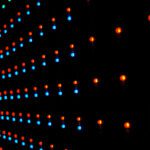The underwater remains of a ship built in Fremantle in 1876 and which sunk off the coast several years later can now be explored with ease thanks to a digital 3D model unveiled by Curtin University and the Western Australian Museum following the recent 143rd anniversary of its loss.
Colonial schooner the Star was used as a whaling vessel for expeditions off WA until 1880 when a dramatic maritime mishap caused it to sink off Rockingham, thankfully without loss of the crewmembers’ lives.
Returning from an unsuccessful whaling trip to Geographe Bay, a navigational error saw the vessel plough into the Murray Reef near Port Kennedy at about 3am on October 20, 1880.
The wreck was discovered in 1972 at a depth of 2.7m and the WA Museum excavated the site in 1983, during which overlapping black and white film photographs were captured and a 2D photomosaic was created.
In the summer of 2022-23, Curtin University HIVE (Hub for Immersive Visualisation and eResearch) Internship student Jarod Harris used the photography from 1983 to create the digital 3D model of the wreck released today.
Associate Professor Andrew Woods, manager of the Curtin HIVE said the Star was significant as an early Western Australian-built vessel, with the wreck providing evidence of colonial ship-building methods and materials.
“The digital 3D model has been created from the legacy photography using a technique known as photogrammetric 3D reconstruction,” Professor Woods said.
“The new 3D model of the Star allows the wreck site to be inspected in much greater detail than ever before, including with use of visualisation technologies such as virtual reality.
“By visiting the website, the wreck model can be panned, rotated and zoomed in on as a 3D object, and examined from any angle.”
Dr Ross Anderson, Curator at the WA Museum said the latest inspection of the wreck site in 2004 revealed very little of the vessel remained after decades of exposure to the underwater elements but in 1983 parts of the wreck were in good enough condition to be identified as being made from jarrah, sapwood, red mahogany and red gum, sourced from both WA and interstate.
“No whaling equipment was found at the wreck site, but large pulleys were recovered, along with artefacts including a brass ship’s log, a penny dated 1876 and different types of ceramic wares,” Dr Anderson said.
Mr Harris said being able to create the 3D model from the WA Museum’s records of an archaeological excavation conducted 40 years ago was an exciting and very satisfying process and captured a moment in time.
“Our 3D model gives researchers and the public virtual access to this significant archaeological site and enables them to learn more about Western Australia’s early maritime history,” Mr Harris said.
The Star 3D model project was funded through the Commonwealth Government’s Underwater Cultural Heritage Program.



